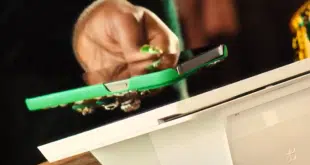Investors may be disappointed with Apple Inc. in the wake of that tech giant’s introduction of two new iPhone models, but they’re plenty happy with digital wire-transfer company Xoom Corp. San Francisco-based Xoom on Tuesday raised $85.6 million in a new stock offering, about $20 million more than it expected to raise just a day earlier.
Xoom got the lift by adding, because of investor demand, 771,245 shares to the 2.3 million shares that it initially planned to sell in a so-called follow-on stock offering to its initial public offering of last February. In addition to the net 2.97 million shares the company sold itself in the follow-on, other shareholders sold 1.43 million shares, all for $30.50 per share. After underwriting expenses, Xoom’s net take came to nearly $86 million.
“We’re very excited to have completed another successful offering, and are pleased that there was significant demand among investors to purchase Xoom stock,” a spokesperson tells Digital Transactions News by email. Xoom declined further comment.
In a prospectus for the offering, Xoom said it planned to use the funds to expand its capital base, make acquisitions and increase its stock float. Xoom’s shares on the Nasdaq Global Select Market closed today at $32.38, up 5.5% from Tuesday’s close.
In contrast to established giants in the money-transfer business such as The Western Union Co. and MoneyGram International Inc., 12-year-old Xoom does not have a network of thousands of agents around the world. Instead, it uses an all-digital model, beginning with online transactions. Nearly two years ago, the company added a mobile version of its service.
Despite the challenges of its non-traditional model, Xoom has been making headway. Gross sending volume, or funds sent, in 2013’s first six months totaled $2.66 billion, up 74% from $1.53 billion in 2012’s first half, according to the prospectus. First-half transaction volume grew 54% to 4.62 million from 3 million a year earlier.
Xoom’s active customer base, those that have made at least one transaction in the preceding 12 months, increased 40% to 919,610 in the first half from last year’s 658,233, and the number of new customers grew 17% to 244,530.
“They are one of the few digital-channel providers that is really succeeding,” says Arkady Fridman, a senior analyst at Boston-based Aite Group LLC who researches the money-transmitter industry.
The prospectus says 90% of Xoom’s sending volume is funded through bank accounts via the automated clearing house network, which costs Xoom less than funding through credit and debit cards. The high share of ACH funding stands out in an industry where cash is so prominent and many customers don’t have bank accounts.
Fridman attributes Xoom’s ability to attract banked customers to its high spending on marketing and advertising on TV, in print, on the Web, and on promotions. “They’re advertising everywhere and anywhere,” he says. In fact, Xoom spends about 23% of its revenue on marketing versus about 4% for the far larger Western Union, according to Fridman.
Xoom lost money in 2010, 2011, and 2012, though it made $4 million in 2013’s first half. For now, Fridman doesn’t put much stock in those losses because he says the company has been plowing its earnings into growing the business. “They believe in the long-term vision,” he says. “They understand that remittance is a scale game.”





